(continued from Feature Diagram Overview, Part 2 )
There are a set of interesting types of variation points:
A dimension is a concept where all features are alternative features.
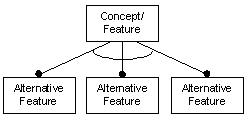
A dimension with optional features is a concept where all features are alternative optional features.
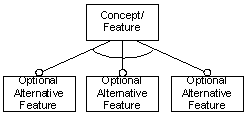
An extension point is a concept that has at least one optional feature or one set of or-features.
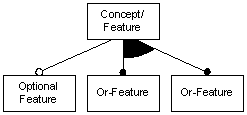
An extension point with optional features is a concept where all features are optional features.
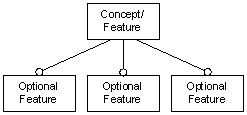
An extension point with or-features is a concept where all features are or-features.
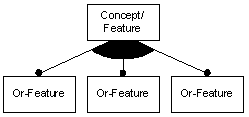
To complete a feature model, you capture other information about each feature: a semantic description which may include other models, traceability links, and categories; rationale for why the feature is included and recommending when variable features should be included; stakeholders in the feature; exemplar systems demonstrating the feature; constraints and default dependency rules such as mutual-exclusion or requires constraints between features and suggested defaults; availability sites, binding sites, and binding modes describing when, where, and to whom a variable feature is available, is bound, and whether it is bound statically (can never be rebound), changeably (can be unbound and rebound if necessary), or dynamically bound (automatically bound before use and unbound after); open/closed attribute where the feature is open if new variable subfeatures are expected, and closed if not; and priorities to capture how commonly variable features are used in the domain, how fundamental they are to the feature model, and which are more important to implement first.
______
This posting contributed to the following article:
